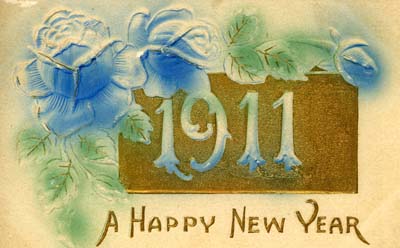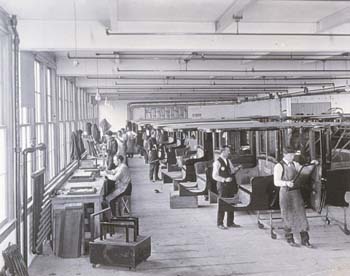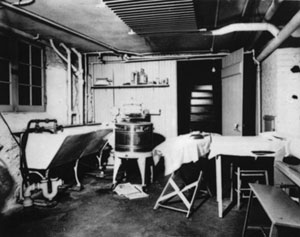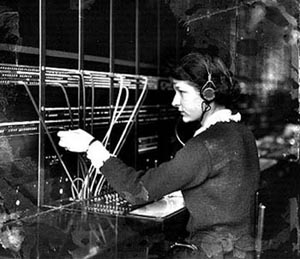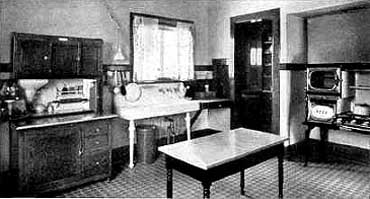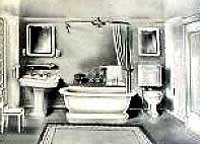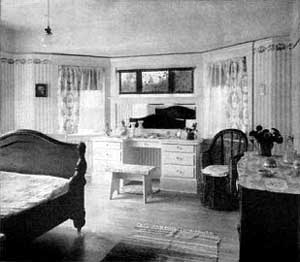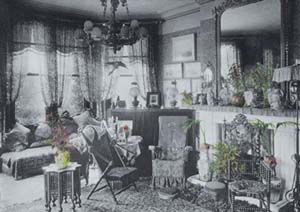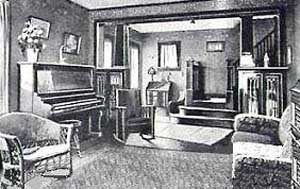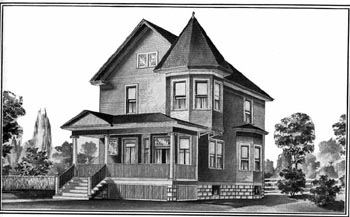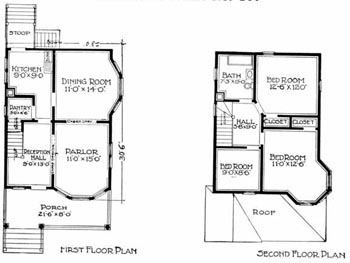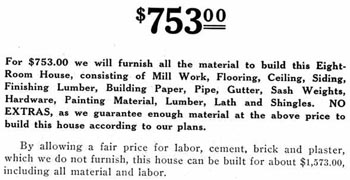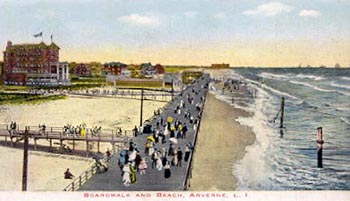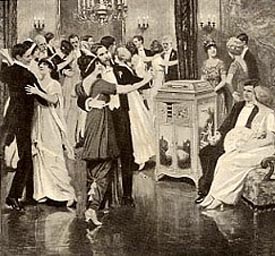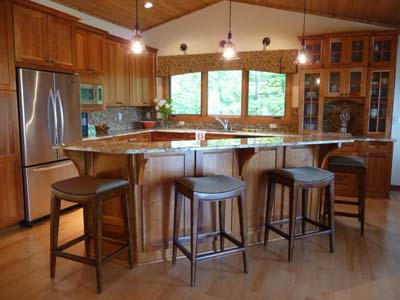Was life more simple 100 years ago? This was the question I pondered when I found this postcard in an antiques shop last autumn. What was life like in 1911? Here are some thoughts to mull over…
The decade leading up to 1911 was a time of great transition, from the way people lived and worked to the way they dressed and furnished thier homes.
times are changing…
The years from 1900 to 1910 changed the balance of Americans that lived on farms or in rural areas from 54% to 49%. People were finding opportunities in the growing cities and began moving into them more and more. This can be partly attributed to the fact that there were increasing numbers of factory jobs that needed to employ workers. A result of this was that it led to a severe decline (over 50%) of people willing to work as servants for the upper and middle classes.
Although factory work was not easy, some advances had been made to the work week and conditions. In the late 1800’s it was typical to work 6 days each week for 12 hours each day, this changed somewhat by 1911 when there was a movement towards 8 hour days and half days on Saturday. The average salary in 1910 was $574 per year and in 1912 it was $592 per year. This averaged 15 to 25 cents per hour.
new modern conveniences…
With so many upper and middle class homes carrying out at least a portion of the day to day tasks, there was a necessity to invent time saving devices. These ‘mechanical servants’ were the ‘modern conveniences’ to assist the housewife in maintaining a well run home. They were only available to those fortunate enough to have electricity however, which by 1912 was only 16% of households. It was in 1907 that the first electric washing machines and irons went on the market. The first electric vacuum cleaners were sold in 1908 and a year later the first electric toaster became available. The wealthier households made it a practice of placing a toaster in each bedroom so they could enjoy this new convenience more readily.
Telephones were fairly popular in 1911. By 1904 there were over three million telephones in the US connected by manual switchboard exchanges. Each central exchange office employed an ‘operator’ that connected every call. Each telephone subscriber got connected to the nearest central exchange office (named after the town or street where it was located) and then got connected to the recipient via another exchange. The phone did not ring on the other end as the ‘operator’ put the call through to the connecting exchange. In 1911, a call could only travel 2,100 miles, or the distance between New York and Denver. This was the extent of the long distance service at that time.
the kitchen…
By this time the middle class kitchen began looking somewhat like the kitchens we have come to expect. Newly built kitchens typically contained a sink, stove and icebox, often times placed in the ‘triangle floor plan’ that we associate with efficiency today.
the bathroom…
By 1911 the majority of middle class homes had running water, and most towns of 5,000 or more inhabitants had city water and sanitary sewers. Bathrooms were being added to older homes and purchased as a package to be included in new homes. The 1910 Sears catalog sold a complete bathroom set for $49.95. This included a sink, claw-foot bathtub and ‘water closet’. Built-in tubs began replacing claw-foot bathtubs in many homes as well, as this gave the bathroom a more up to date and cleaner look.
the bedroom…
The addition of central heating in many homes made the bedroom fireplace obsolete from a heating standpoint. The availability of indoor plumbing reduced the number of bedrooms containing a washstand with bowl and pitcher. Built in cupboards began replacing the typical armoire or wardrobe that up to this point had been used to store clothes. This streamlined the look of rooms a bit more.
A typical schedule for the week looked something like this…
Monday – laundry
Tuesday – iron, mend, sew
Wednesday – bake
Thursday – shop for groceries
Friday – clean
Saturday – clean, bake for Sunday dinner
Sunday – church, dinner, visit family and friends
a new era…
With the ending of the Victorian era there was a movement against the over-decoration and poorly crafted products that often filled the home in the latter 1800’s. Homes were becoming more simplified, both in architecture and home decor. This was present not only in America with the popularity of Stickley’s Mission style, but in England where William Morris was a great advocate for quality craftsmanship and the Arts and Crafts Movement. In Sweden, Carl Larsson became famous for his home that personified a handcrafted aesthetic drawing from the Gustavian period.
victorian living room…
1918 livingroom…
A typical middle class home available from Sears in 1911…
So was life more simple in 1911?
Compared to 2011 there were far fewer distractions and modes of communication. A person concerned themselves with what was happening in their own small community and the big headlines that made the local newspaper. Postcards and handwritten letters were the life line to family and friends far away. The telephone was used for very short and necessary communication. The television was yet to make it’s debut. The amount of information that any person from 1911 came in contact with was greatly less than we have today. This meant there was far less to clutter their day to day thoughts and memories.
Life was more physically active then for most of society, as many people walked or bicycled from place to place and many still were working the land. There were community dances nearly every week across much of society. Exercise as we know it was not something they felt they had to make time for in their day to day routine.
Compared to the Victorian era, 1911 was moving toward a more simple aesthetic and embraced clearing away clutter and distractions of a visual nature. This gave people an opportunity to keep their most valued (whether monetary or sentimental) possessions and free themselves of what did not contribute to their lives in a positive way.
There is a parallel to our generation now….
There is a portion of our current society that is reacting to the exesses of the latter 1900’s and believe that a more simple approach is a more meaningful one. The more things change the more they stay the same. We live one hundred years later and are approaching the simplification process in a way that is relevant for our time.
Relatively speaking, no matter where we live our life or in what timeline, living a more simple life can be achieved. It begins with our outlook on life. What are your thoughts?
Images from Google Images, Victorian Interiors & More, Lisa’s Nostalgia Cafe’ and Sears Archives
Information sourced in part from Lisa’a Nostalgia Cafe and About the USA
